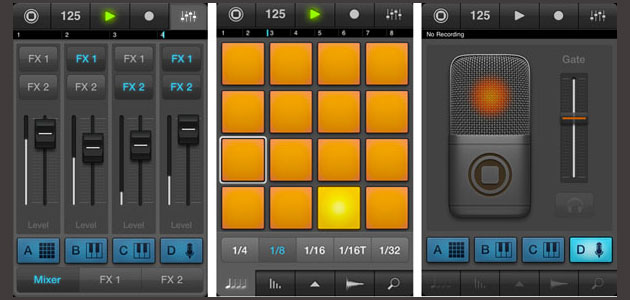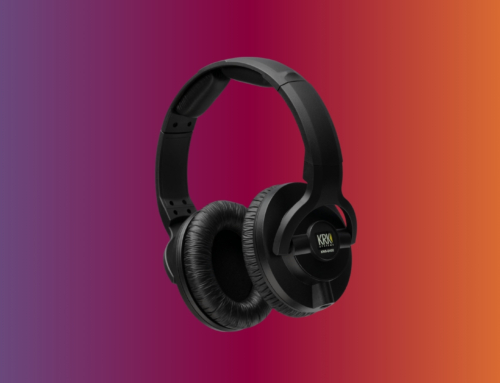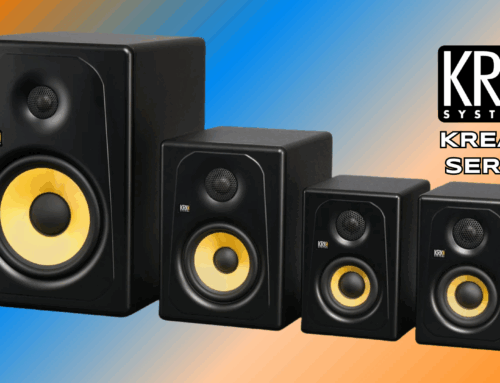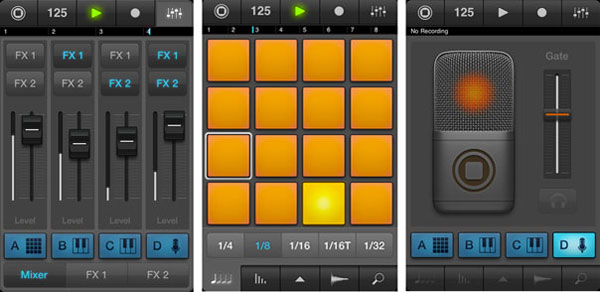
iMaschine by Native Instruments
Billed as The Groove Sketchpad, iMaschine follows hot on the heels of the 1.7 release of the full software, and the launch of Maschine Mikro, a slimmed down version of the original hardware. The family is growing, and given Native Instruments’ versatility with their software to date, it’ll be interesting to see how this first foray into the iOS world will shape up.
First, the pitch: iMaschine is “a professional instrument designed for beat producers of all levels.” It offers pads, keyboard and mic input, note repeat, seven effects, twenty-five kits, four hundred samples, import, export and integration with Maschine and Soundcloud. It’s priced at $4.99/3.99€ and is designed for iPhone and iPod Touch, but Verizon iPhone 4 owners must have iOS 5 installed. Hopefully a proper iPad version is in the pipes, because the extra screen real estate would make a natural scratchpad for this kind of Maschine extension, but for the moment iPads will just run the iPhone version.
You have four Groups to play with, each of which can be designated as pads, keyboard or microphone input. The pads are in the familiar orange four by four grid, taking up basically the whole screen so as to be big enough to be useable. There’s no sequencer, so to speak, so you’ll need to play your beats in live. The quantize works well, though, so timing is no big problem, and by toggling the note repeat on and off, you’re able to get those quick 16ths and 32nds in time, too – though you are limited to five quantizing options: 1/4, 1/8, 1/16, 1/16T and 1/32.
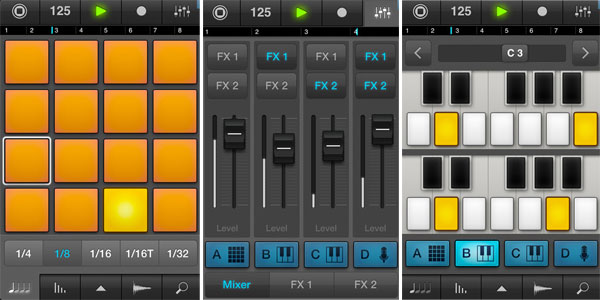
The keyboard module comprises two octaves layered vertically, the keys small but workable, and a horizontal slider at the top of the screen to move between C-2 and C+6. The final module is a live input that draws from the iDevice’s built-in microphone. It’s quite noisy in practice, but then you’re not programming studio quality music here, you’re getting ideas down quickly before the inspiration vanishes, and for this it works quite well. Recorded samples are automatically sized to fit the current loop and, like the drum and pad samples, can be pitched, gain-adjusted and panned, as well as have their trigger mode switched between one-shot and legato.
For both pads and keys, velocity is taken care of too, albeit on a separate screen. There’s a thin Default slider on the left and a wider Live Play slider on the right. To adjust the velocity you’ll hear when you’re playing a pad normally, you move the Default slider. To adjust the velocity of a note or pad in realtime, you tap inside the Live Play slider. It’s not perfectly intuitive but it actually works reasonably well within what is, let’s face it, an entirely unforgiving input mechanism.
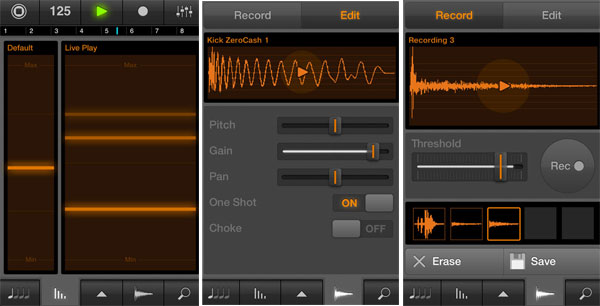
The mixer is pretty straightforward – toggle Group mutes, adjust levels and apply either or both of two (global) effects from a choice of chorus, lofi, delay, flanger, low-pass, bandpass and hi-pass filters, each with their own tweakable parameters. The app also supports tap tempo and (global) swing, pattern clear, double and length (one to thirty-two bars), erase and mute individual pads, undo, redo and history undo. Whew.
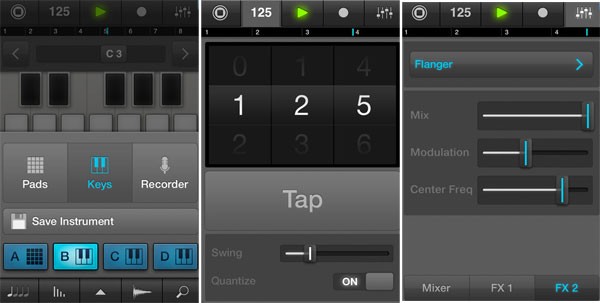
It’s a good feature set, really good, and I haven’t even started on the library (which, to be super-brief, is big and high quality and handles expansion via in-app purchases), but it’s not without its flaws. Muting a pad means entering the options menu, for instance, which goes against a workflow aimed at minimising distractions. There’s no sequencer as such at all. The thing is going to loop, and you’re going to play live, and that’s it. I really hope to see a simple step sequencer in future updates; the pads make for a great input on the Maschine hardware.
I can forgive these things, though. Being able to write quickly on my phone and then send real, useful data into Maschine proper when I get home is a godsend, as are half a dozen other features iMaschine boasts.
Like Maschine 1.0, then, iMaschine has room for improvement but is nonetheless a great, solid little unit that brings a new way to write music to your fingertips. And when you consider how Maschine has evolved since 1.0, I think it’s safe to assume that NI will incorporate a good amount of user requests and keep this app front of mind for some generations yet. For my money, it really is one of the best music apps out there.
